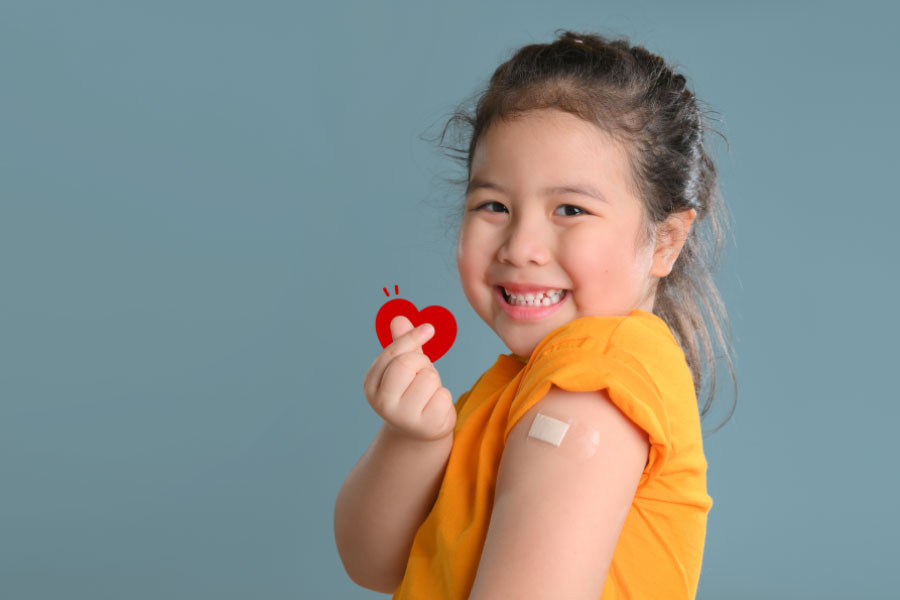Can You Take Fear Out of Needle Sticks?

Is it possible to make an upcoming vaccine or blood draw easier for your child? Yes! Needle sticks, whether they be for vaccines or a blood test, can cause fear and pain for both you and your child. But there is help, and the Children’s Medical Center is spreading the word about ways to make pokes easier. Your role as the parent is to help advocate to lessen the physical pain, reduce the fear or stress your child is having, and be a voice for your child. Try some of these simple tools to make the needle stick experience better. Download our Making Pokes Hurt Less sheet.
Numb the Skin to Lessen the Pain
When getting a vaccine, there are tools to help distract the brain from the pain of the poke. The ShotBlocker is a small disc with bumps that is pressed onto the skin right where the needle stick is given. Your child’s brain is so busy thinking about the feeling of all the little bumps that it doesn’t feel the poke as much. Also helpful is Buzzy, a handheld device that vibrates right near the injection site to minimize the feeling of sharpness. Both ShotBlocker and Buzzy can be purchased without a prescription from online retailers. Some medical offices have a cold spray that creates a temporary numbing sensation (this should be used with provider oversight). When getting blood drawn, numbing creams can be put on the skin in advance (30 to 60 minutes before the poke) to create a spot that’s numb. Speak with your medical provider to get a prescription for this numbing cream and more information on how to use it and where to apply it. Putting an ice pack on the site of the needle stick may help too. The ice pack can be held onto the injection site for two to five minutes before the shot.
Positions to Lessen Anxiety
Giving your child some control over how the process will happen may also help. Usually sitting or being in an upright position decreases anxiety.
- For a school-age child, ask them how they want to sit or what position they will be most comfortable and feel safest. Is it sitting on your lap or in a chair? Is it while getting a hug or holding a hand?
- A toddler or young child usually does best sitting on a parent’s lap while getting a big hug to help them stay still.
- For those under 12 months, swaddling is very comforting. Holding the baby skin-to-skin can also help soothe a baby. Most children don’t like to lie on their back as it makes them feel less in control and fearful of what is happening to them.
Distract to Reduce Fear From Needle Sticks
A toy, book or song can keep your child’s mind on something else. The more they can focus on something else, the better they can cope with the poke. Playing games on a phone or tablet is a great distraction too.
- Babies may enjoy looking at a noisy or light-up toy.
- Teens can listen to music, have a conversation or practice deep breathing.
Special Help for Babies
If your baby normally breastfeeds, you can breastfeed them before, during and after their poke as this will help them stay as calm as possible. Special sugar water, called sucrose, is also something your medical office may have to give to the baby just before their poke. The special sugar helps to act as a pain reliever in their body.
Be Honest About Needle Sticks
As you prepare yourself and your child, don’t promise NO pain or tell them it won’t hurt. Saying things like, “It’s a quick poke” or “It feels like a pinch” are honest and help them prepare. Encourage them and end on a positive note- “You did it!” Guest Blogger: Lauren Fortier, PNP, Pediatric Intensive Care Unit, Children’s Medical Center Related: Ready or Not Hospital ... Here We Come

